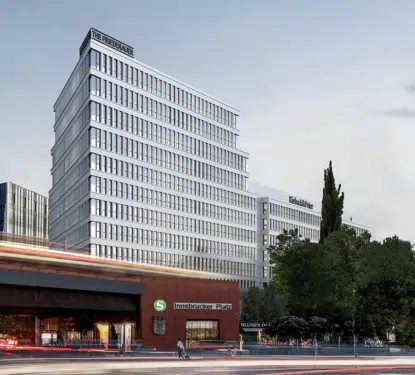Southeast Asia stands at a critical juncture in its energy journey. With electricity demand surging by over 60% in the past decade and projected to more than double by 2050, the region presents both a formidable challenge and an extraordinary opportunity for energy efficiency solutions.
Our new report is a collaboration with Singapore-based Ampotech and reveals that while Southeast Asia accounted for just 11% of global energy demand growth since 2010, the International Energy Agency projects it will contribute more than 25% of growth through 2035, second only to India, despite having half its population.
Southeast Asia: A Region of Contrasts
The energy efficiency landscape across Southeast Asia is remarkably diverse. Singapore leads in market maturity, though its scale remains limited. Malaysia and Thailand occupy the middle ground, showing strong development despite challenges with fragmented integration and capital-intensive procurement practices. Meanwhile, Indonesia, the Philippines, and Vietnam represent emerging markets where adoption is largely confined to donor-funded pilots or premium commercial segments.
Indonesia, the world’s fourth most populous country with over 283 million people, exemplifies the region’s potential. Despite robust economic growth averaging 4.8% annually through 2027, energy efficiency adoption remains surprisingly limited. Most market activity focuses on basic equipment upgrades rather than intelligent energy management systems. However, the country’s persistent economic growth and international focus are driving significant opportunities in new industrial estates, logistics hubs, and a rapidly expanding data center sector expected to reach 900 MW by end-2025.
The Philippines presents a different picture. With electricity prices among the highest in the region, the financial case for energy efficiency is compelling. The 2019 Energy Efficiency and Conservation Act established a comprehensive legal framework, yet enforcement remains inconsistent outside major urban centers. Manufacturing, particularly in export-oriented zones, shows higher awareness due to buyer-driven environmental, social, and governance pressures.
Vietnam’s remarkable socio-economic transformation has positioned it as one of the world’s fastest-growing market-oriented nations. The increase in foreign direct investment has raised compliance standards for export-focused manufacturers, with many now embedding LEED, LOTUS, and ISO 50001 standards. The lifting of restrictions on foreign ownership of data centers has triggered a surge in new projects, where ambitious power usage effectiveness targets and high industrial tariffs make energy efficiency paramount.
Breaking Down Barriers
Despite the promising outlook, significant obstacles persist across the Southeast Asia region. Electricity subsidies in Indonesia reduce the payback on efficiency solutions, holding back technology adoption. Building regulations, while becoming more ambitious, struggle with inconsistent implementation. Most firms demand paybacks within two to three years, restricting adoption of deeper retrofits.
Local banks typically have limited understanding of energy efficiency, viewing such projects as risky and demanding significant collateral. The market remains dominated by capital expenditure procurement, with interest in operational expenditure models growing slowly but trust remaining low.
Infrastructure presents another challenge. Many commercial and industrial buildings, especially those over a decade old, lack basic building management systems, making it difficult to implement sophisticated control strategies or platform-based optimization.
A Roadmap for Success
Our study identifies several critical success factors for companies entering these markets. Successful entrants in Southeast Asia will combine hardware and software into simple, full-stack solutions to address infrastructure gaps. They’ll embrace modularity with multi-layered value propositions that serve both high-end and mass-market tiers.
Critically, solutions must target three-year paybacks or faster, focusing on high-impact areas like HVAC optimization and variable-speed drives. Differentiation will come not just from functionality but from the credibility of execution and alignment with local decision-making structures.
Local presence matters enormously. Companies need in-country credentials, relatable case studies, and trusted relationships. Foreign vendors lacking these often face skepticism, particularly where project outcomes are hard to verify.
Technology as Catalyst
The convergence of affordable sensing technology, cloud analytics, and artificial intelligence is creating new possibilities. Ampotech’s platform approach exemplifies this evolution, offering integrated solutions that can scale from traditional shophouses to Grade A mixed-use developments meeting stringent Green Mark Super Low Energy certification.
As climate goals mature and grid pressures intensify, Southeast Asia is entering an era of accelerated energy efficiency adoption. The share of buildings using intelligent energy systems in Indonesia, for example, is expected to double within five years, with another 60% of the market beginning to pilot individual energy efficiency technologies in the same period.
For companies with patient capital, local expertise, and solutions tailored to the region’s unique constraints, Southeast Asia represents one of the world’s most significant energy efficiency opportunities, one that will only grow in the decades ahead.



